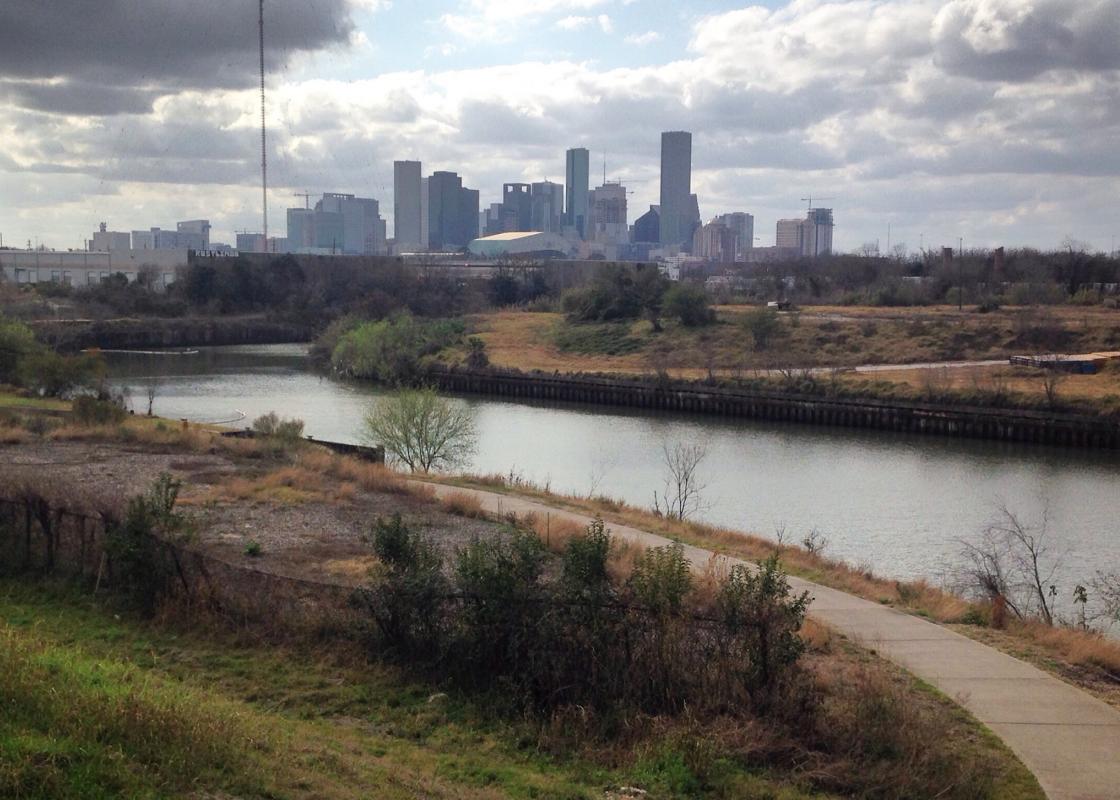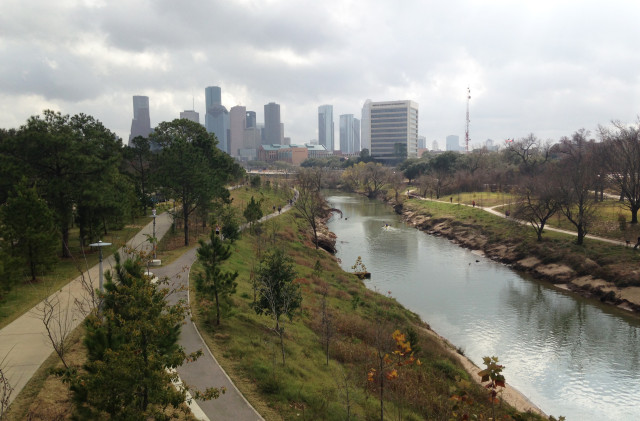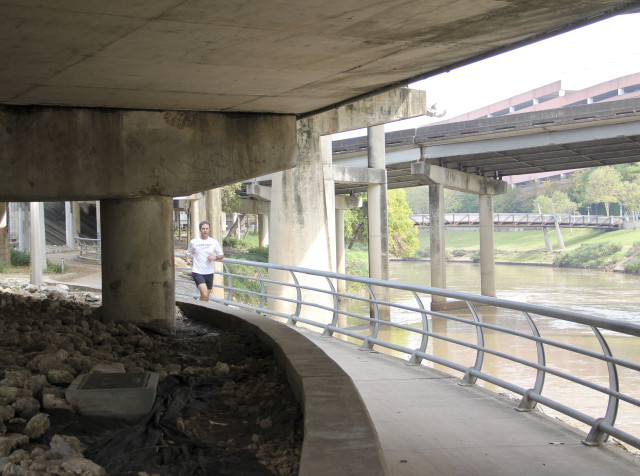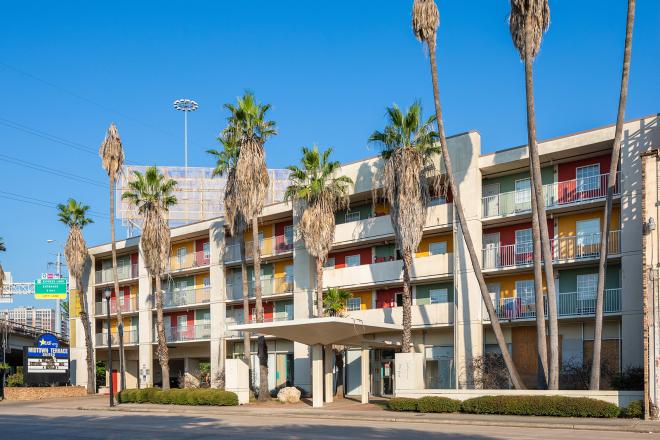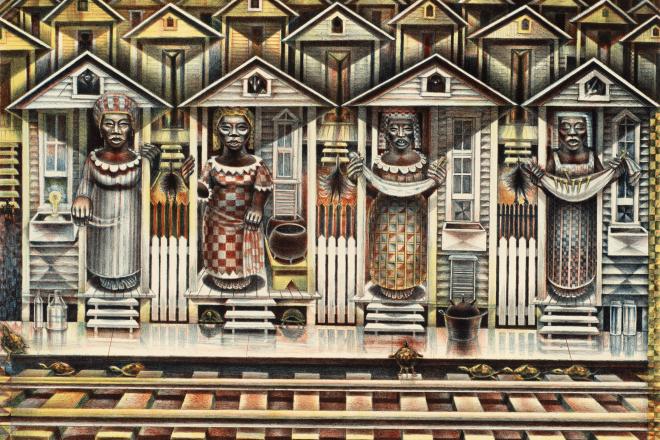The Cultural Landscape Foundation held its Leading with Landscape conference in Houston March 11-13. Charles Birnbaum, the founder and executive director of the organization, set the stage for a day-long symposium with a review of Houston history in which he suggested three eras: engineering (freeways), architecture (great buildings), and landscape architecture (today’s park renaissance). After designers presented about their work on Memorial Park, Buffalo Bayou Park, Discovery Green, and other major projects, a final panel was charged with synthesizing and responding to the day’s proceedings. William Fulton, Director of Rice University’s Kinder Institute, spoke after former Mayor Annise Parker. The following is an edited transcription of Fulton’s comments.
Thank you very much for having me. This has been a very stimulating day and evening last night. I want to do a poll. How many of you live in Houston or the Houston area? Keep your hands up. Of those people, in the last month, how many of you have gone out somewhere on the bayou system and walked or jogged or rode your bike or something like that? [More than one hundred.] And of all the people with your hand up, how many of you have transported yourself to this event today without driving your own car? [A dozen or more.] Now, of those, how many of you don’t own your own automobile? [Two or three.] Now you know why I feel so out of place so often in Houston.
I thought Charles [Birnbaum]’s presentation this morning with the three eras was a brilliant way to think about Houston. The engineering era, the architecture era, and the landscape architecture era. He showed us the three things that really define Houston: the linear hardscape (or if you look at a freeway map, the circular hardscape); then there are the architectural monuments that the linear hardscape connects; and now the emerging natural connectivity. And those are three really great things. The three of them together define Houston. What we have to do moving forward is figure how to go to the fourth step.
I have been to so many great events in the last week. I was at a Rice Design Alliance mixer at Morris Architects two nights ago. Last night, we had the 100th anniversary of the Parks Department party at McGovern Centennial Gardens in Hermann Park. There is so much design talent in Houston. I have lived here for a year and a half. I lived in Los Angeles for 30 years. There is more design talent at the typical mixer in Houston on the typical weeknight than I ever saw in one place in L.A. in 30 years. [Applause.] And this city, which has the greatest collection of design talent I have ever seen, has the worst street-level urban design of any large city in the United States. [Laughter.] Why? The answer is pretty simple. All you have to do is look at who had their hands up and who took them down. The reason the street-level design is so bad is that none of the designers experience it, and neither does anybody else.
Out of this hardscape mess that we’ve created over the last 100 years, through the implementation of the Bayou Greenways and Greenways 2.0 plans, we can create a whole different way how people look and view, not just experience, but actually think, about the metropolitan area. The point that Tom Bacon makes about how we should reimagine the city [using the east-west lines of the bayous rather than freeways] is a very good point. As somebody who runs up and down Buffalo Bayou a lot, and then also runs up and down Bagby to get to Buffalo Bayou from my apartment, I think the goal should be to get all the people on the bayou system on foot back up into the city without getting into their cars, so that they understand that this incredible natural system actually connects a remarkable set of urban places that they can experience as well. The natural and hardscape linear approaches should connect to one another. I think what we have seen today is a really, really remarkable set of projects associated with either natural nodes such as Discovery Green or natural linear systems such as Buffalo Bayou Park. And although I take Annise’s point, that it is very important to have the city disappear from you when you are on the bayou system, I think it is equally important to understand how the natural systems connect you to the city and how those things together put you in touch not only with nature but with urban life as well.
A few weeks ago, I went on the Buffalo Bayou cruise. OK, it was the Cupid Cruise on Valentine’s Day. [Laughter.] Thank you, Buffalo Bayou Partnership for that! The most astonishing thing to me about that cruise was not the fact that you were on a bayou in the middle of one of the largest cities in America, but the connection and the juxtaposition of being in that place surrounded by an urban place. Not just, “Here’s the greatest view of Downtown from the bayou when you round the bend,” which is a magical moment on the cruise, but also when you are on the bayou going underneath all the freeways and all that other infrastructure. That is a really magical and remarkable moment, too.
If all the people in this room dedicate themselves over the next 10 or 15 years to the following proposition, we can make some progress in making Houston a really great urban place. We should dedicate ourselves to helping people understand that experiencing a city on foot is not something that only occurs along bayous. Experiencing a city on foot is something that occurs in the city as well, and it is really powerful when you can go back and forth between the urban and the natural all day long.
I grew up in a small factory town in upstate New York. The factories were along the river, discharging their waste into it. Now you can catch trout in the river because none of the factories are there anymore. One of the most remarkable experiences of my childhood was to be able to dip in and out of an urban and natural environment almost on a minute-by-minute basis either walking or riding my bike.
When I came to Houston a year and a half ago, everybody I knew in California pretty much asked, “What are you doing that for?” The truth of the matter is, this is a really remarkable urban moment on the national stage for Houston. The single most important reason for that is the work that has been highlighted today, and the people in this room, the work on the natural linear paths. I think the next step, the fourth era that Charles needs to put in his slide show, is the era when the natural and urban merge. I don’t know what you call it. For lack of a better term, let’s call it the era of urban design. Because that is when all of us in Houston will begin to recognize what most of you already know, which is this is a really great city. And it deserves to be experienced not only in your car on the freeway, or on foot on the bayou, but all over town, all of the time. Thank you. [Applause.]


